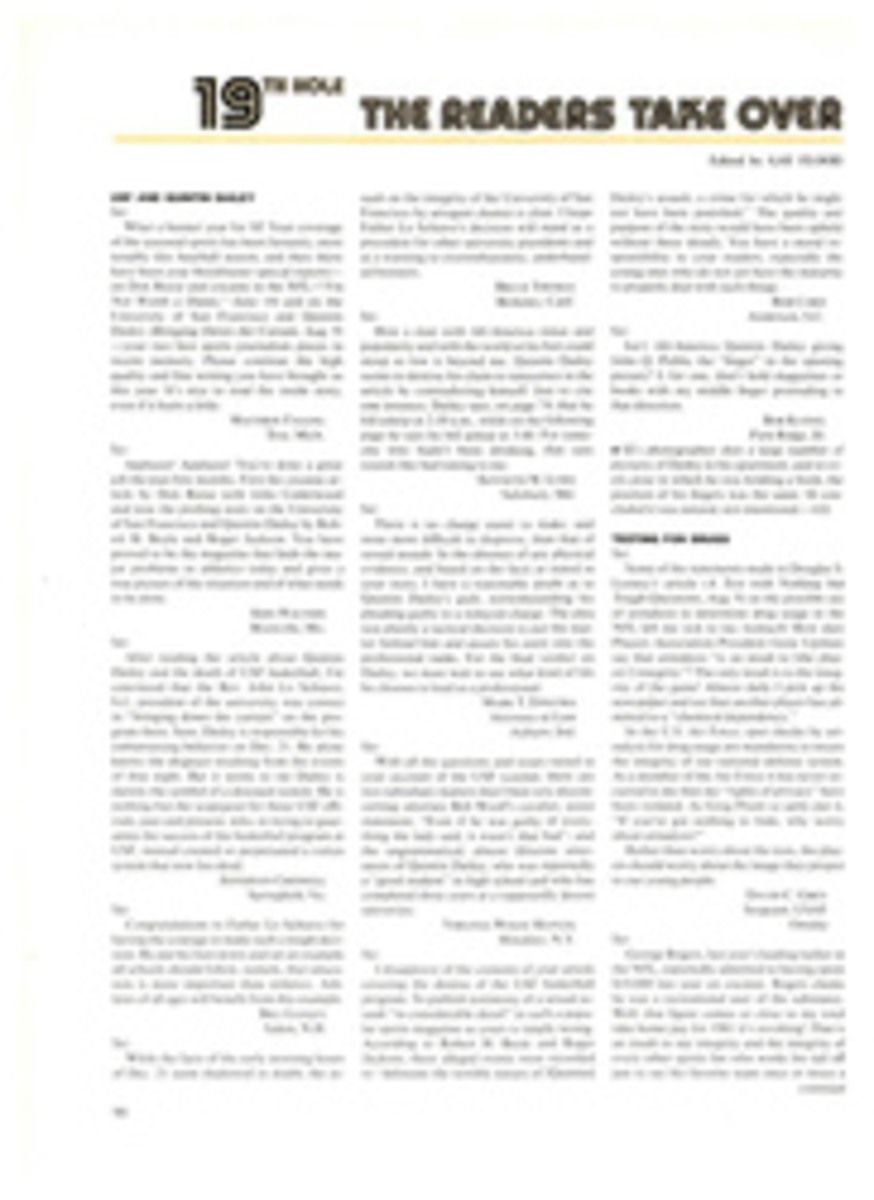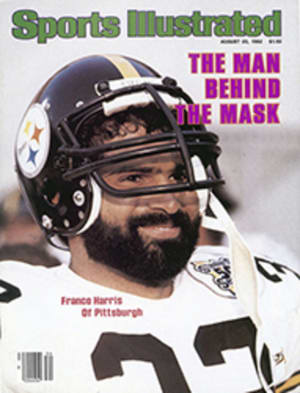
LETTER FROM THE PUBLISHER
"The Steelers to me are what the Mississippi River was to Mark Twain," says Roy Blount Jr., whose profile of Franco Harris appears on page 72. It is the 17th magazine piece Blount has written about the Steelers since the publication of his book About Three Bricks Shy of a Load, an account of the 1973 season, which he spent hanging around the team.
"I wanted to experience football in a way that no fan or sportswriter or player had ever experienced it, trying to find a hole in the game itself I could run into," Blount says. "I was just like all those jerks who run out onto the field during a game, but I wanted to do that without interfering." Which he did so triumphantly that he's now, in effect, an honorary Steeler and a welcome visitor at training camp and at games.
"I've been back nearly every year once or twice," says Blount. "I'll always be a Steeler at heart; now I'm just an old Steeler."
His son, John, 13, who was drawing detailed pictures of airborne Steelers as soon as he was old enough to grip a felt-tip pen, is an old Steeler, too.
"Bringing John to camp with me this year was a continuing link," says Blount, 40, who lives in Mill River, Mass. with his family, dogs, cats, horse and compost heap. "He knows the team better than I do. I'd ask him who players were and he'd tell me.
"Franco was the last loose end of the old Steeler team that I hadn't done justice to. I got to fill out the image of him I'd sketched in the book. I realized how good a hero he is for kids. He represents a departure from the image of football players as mindless, head-knocking people, with his self-preservation and insistence on running in terms of his own imagination, instead of plowing through and proving he's tough. That's the kind of athlete I admire—the kind who can succeed on his own terms as well as the game's terms."
Blount writes in much the same manner, and with resounding success. His 1980 book Crackers was highly acclaimed, and a collection of humorous pieces, One Fell Soup, will be published this fall by the Atlantic Monthly Press.
"There is a certain analogy between writing well and running with a football well," says Blount. "The important thing in both sports and writing is being able to give your imagination some kind of physical form."
Here's an example of what happens when Blount's imagination finds a hole, a description of Harris running, from About Three Bricks Shy of a Load:
"He took a pass in the right flat, all the way over by the right sideline, and cut back toward the other side. As tackier after tackier slanted into him he moved, fending them off, in a series of slues—looking for a gap to cut up through, never finding it, but always advancing somewhat on each hooked swoop, moving downfield gradually, gradually, bevelly, bevelly, rhythmically, like a handsaw ooo-fah, ooo-fah, ooo-fah into hard wood—all the way across the field diagonally and out of bounds on the other side, to stop the clock. A 15-second 13-yard gain with a serrated edge."
PHOTO
BLOUNT GIVES IMAGINATION PHYSICAL FORM

